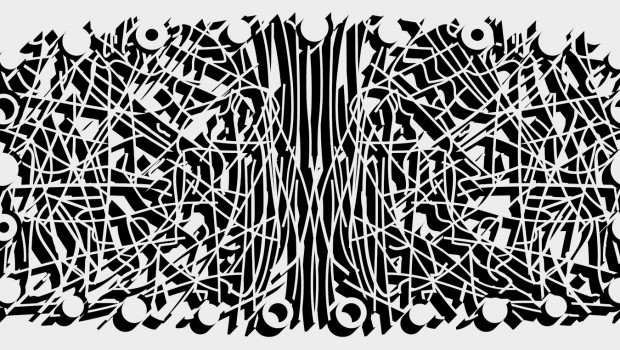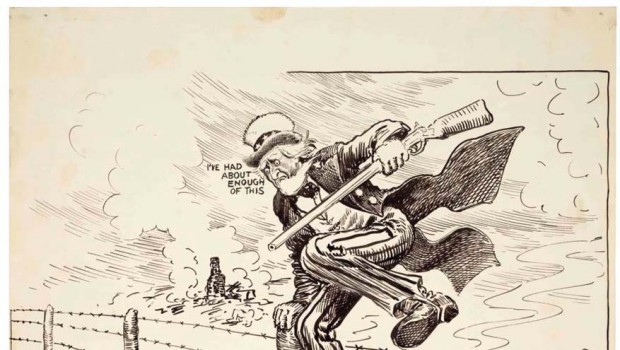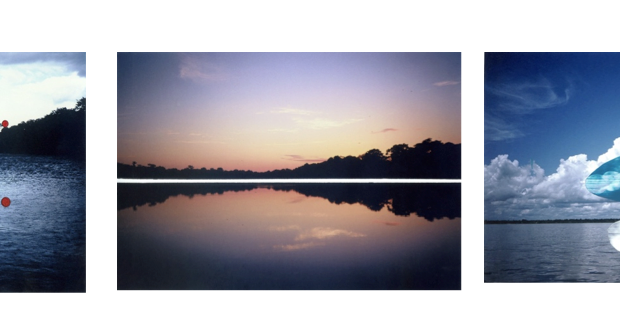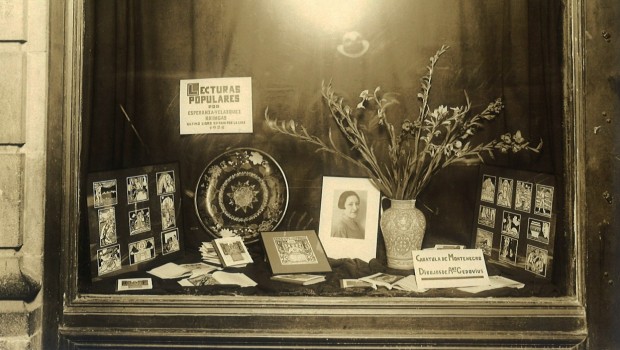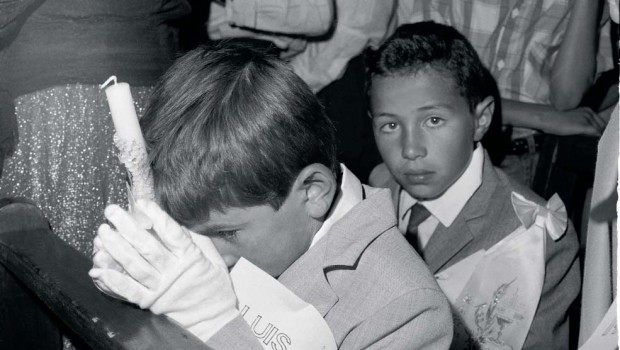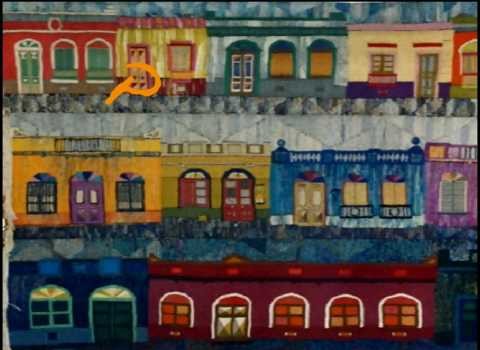A Conversation with Pablo Siquier
Conversando con Pablo Siquier
Rose Mary Salum
Pablo Siquier had a solo exhibition at Sicardi Gallery, where I had the opportunity to talk to him. Siquier is one of Argentina’s most renowned artists. In his last installation, he made possible a collection of pieces that range from an identifiable local architecture to pure abstractions that can be related to landscape, topography and the forms of representation of the city. In his most recent work, Siquier leaves behind the canvas to work directly on the walls of galleries and museums; drawings and installations that operate with the illusion and real perception of space.
* * *
How do you see your own work?
One of an infinite number of ways to classify artists is to divide them into those who relate their work in some way to the present, which could be social reality, the state of the art, the individual reality of the artist, etc., and those who do not. I consider myself part of the second group, an extreme example of which would be Mozart, who was capable of composing pieces that made and continue to make generations and generations joyful, even during times when his own life was a disaster.
You have said that everyday life is not present in your work…
My work is divided into four well-defined series, which correspond to four systems of representation: paintings in color, gray, black and white, and charcoal. This last series, to which the works in this exhibit belong, are mural drawings, quite large, which divide into designs generated with a vectorial 3D program, and drawn by hand with charcoal directly onto the wall. From each series arose different spatial expansions; from the charcoal series came the structures made of iron, one of which is present in the exhibit. There are also paper versions of the drawings.
What is the relationship between your work and color?
Except for the first series, which consisted of paintings on canvas, with saturated colors and a high contrast of temperature and ink, color is absent in my work, basically because the systems of representation that the distinct series were taking on did not need it: the addition of color would have been superfluous.
Your work has a certain rhythm that reminds us of math and science. Can you elaborate on that?
When I was a boy, I could not find in painting, or art in general being made and exhibited in Buenos Aires, things with which I felt myself identified. I found those more in architecture, music, and literature. Aside from popular music, Robert Fripp, ELP, etc., I was responding to more radical and complex productions; first, Brian Eno, and his idea that the repetition of a mistake generates a new form; later on, discovering the work of Cage, Ligeti, Messiaen and, especially, of Steve Reich and Iannis Xenakis. The fact that in Xenakis tension exists between the mathematical and hyper-rational origin of the material in his works and the tremendously expressive and emotional final result was a great reference for my initial works and their evolution.
What is the relationship between your work and the city?
On the other hand, architecture, its styles and, especially, the infinite combinations possible which present themselves in any large city also constitute an inexhaustible fountain of references. Mixtures of styles, urban decay, and contamination are there, of course, but also purity. I would define my work as a particular version of the synthesis and rendering that all inhabitants of a metropolis–especially of our Buenos Aires, San Paulo, and Mexico City–ought to make, whether an artist or not, in order to resist the permanent bombardment of forms, messages of every kind, and excessive and contradictory information to which we are exposed every second of our lives.
• To learn more about Pablo Siquier, watch our interview with the artist at www.literalmagazine.com/videos
Pablo Siquier tuvo una exhibición en la Galería Sicardi donde se dio la oportunidad de conversar con él. Siquier es uno de los artistas más importantes de Argentina. En su última instalación, realiza una serie de trabajos que van de una muy bien identificada arquitectura local hasta abstracciones puras que pueden relacionarse con el paisaje, la topografía y las formas de representación de una ciudad. En su trabajo más reciente, Siquier deja la tela para trabajar directamente en las paredes de galerías y museos donde dibuja y trabaja con instalaciones para operar con la ilusión y la percepción del espacio.
* * *
¿Cómo concibes tu trabajo?
Una de las infinitas posibilidades de clasificación de los artistas es dividirlos en los que involucran su trabajo de alguna manera al presente, que puede ser la realidad social, el estado del arte, la realidad individual del artista, y un vasto etc., y los que no. Me considero parte de este segundo grupo, cuyo ejemplo más extremo es Mozart, que era capaz de componer piezas que alegraron, y siguen alegrando, a generaciones y generaciones, en momentos en los que su vida era un desastre.
Tú afirmas que en tu obra la vida diaria no está presente
Mi trabajo se divide en 4 series bien definidas, que corresponden a cuatro sistemas de representación: los cuadros de colores, los grises, los blanco y negro, y las carbonilas. Esta última serie, a la que pertenecen los trabajos de la exposición, son dibujos murales, muy grandes, que parten de diseños generados con un programa vectorial 3D, y realizados a mano con carbonilla, directamente sobre la pared. De cada serie surgieron diversas expansiones al espacio, de la serie de carbonillas surgieron las estrcturas hechas en hierro, presente una de ellas en la exposición. También hay versiones en papel de los dibujos.
¿Cuál es la relación entre tu trabajo y el color?
Salvo en la primer serie, que consistía en pinturas sobre tela, con colores saturados y de alto contraste de temperatura y tinte, el color está ausente en mi trabajo, básicamente porque los sistemas de representeación que fueron adoptando las distintas series no lo necesitaban: el agregado de color hubiera resultado superfluo.
Hay un ritmo en tus obras que recuerda a la ciencia y las matemáticas. ¿Podrías hablar al respecto?
Cuando era chico, no encontraba en la pintura y en el arte en general que se hacía y exponía en Buenos Aires, cosas con las que me sintiera identificado. Eso lo encontré más en la arquitectura, la música y la literatura. A partir de la música popular, Robert Fripp, E.L.&P., etc, fui accediendo a producciones más radicales y complejas, Brian Eno primero, y su idea de que la repetición de un error genera una nueva forma, hasta descubrir despues la obra de Cage, Ligeti, Messiaen y, especialmente la de Steve Reich y Iannis Xenakis. La tensión existente en Xenakis entre el origen matemático e hiperracional del material de sus obras y el resultado final tremendamente expresivo y emocional fue una gran referencia para mis trabajso iniciales y su evolución.
¿Y la relación de tu trabajo con la ciudad?
Por otra parte, la arquitectura, sus estilos y, especialmente, las infinitas posibilidades combinatorias, que se presentan en cualquier ciudad grande también constituyen una fuente inagotable de referencias. La mezcla de estilos, la deformidad y la contaminación, claro está, pero también la pureza.
Podría definirse mi trabajo como la versión particular, de la síntesis y la edición que todo habitante de una ciudad grande, especialmente de las nuestras, Buenos Aires, São Paulo, el Distrito Federal, debe hacer, sea o no artista, para resistir el bombardeo permanente de formas, mensajes de todo tipo, información desmesurada y contradictoria a la que estamos expuestos en cada segundo de nuestras vidas.
• Para saber más sobre Pablo Siquier vea nuestra conversación con él en www.literalmagazine.com/videos


